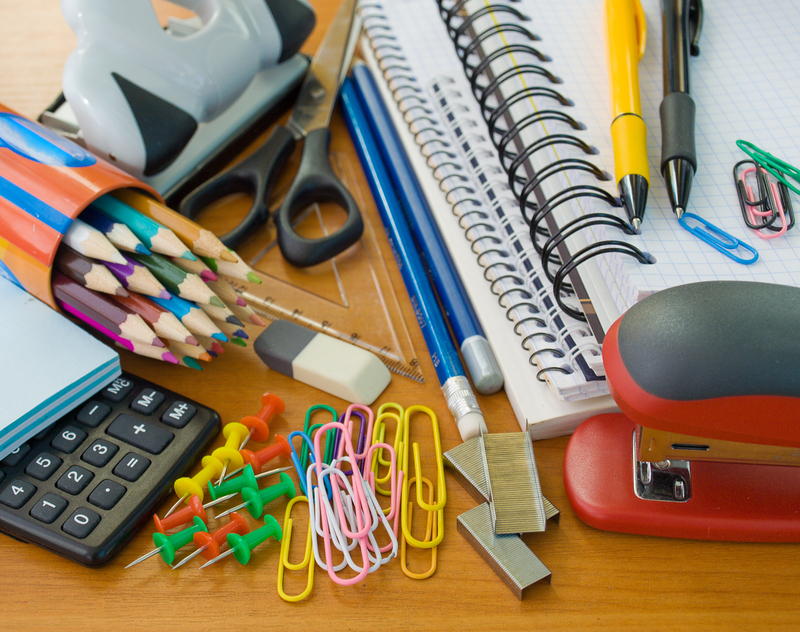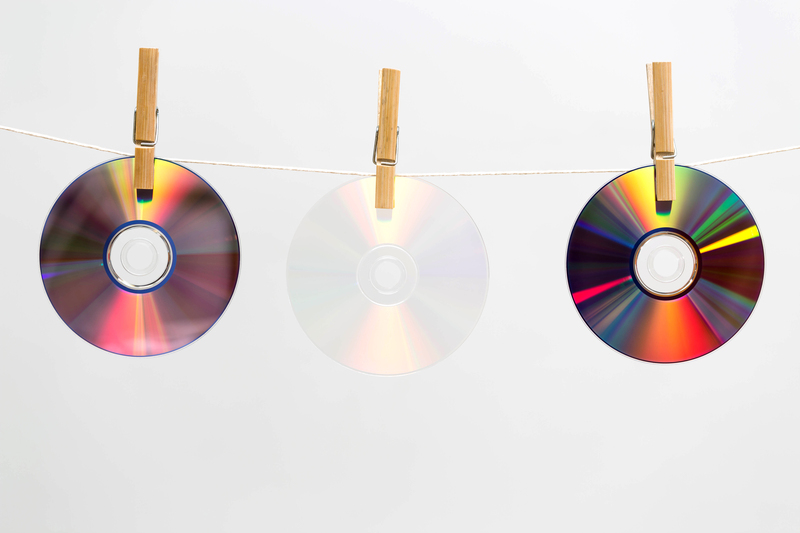Clever Ways to Make Eco-Friendly Decor by Repurposing Broken and Unwanted Goods
In today's world, creating a sustainable lifestyle is more than just a trend--it's a necessity. One of the most impactful and creative ways to make a difference is through eco-friendly decor crafted by repurposing broken and unwanted goods. Not only does this approach reduce landfill waste, but it also adds personality and history to your living space. Ready to turn trash into treasure? Let's explore a variety of clever ideas and upcycling tips that both safeguard our planet and invigorate your home with unique, meaningful decor.
Why Choose Eco-Friendly Decor?
The environmental impact of home decor often goes overlooked. Manufacturing, transporting, and disposing of furniture and decorations contribute significantly to carbon emissions, deforestation, and overflowing landfills. By choosing sustainable interior design and embracing the magic of repurposing and reusing, you:
- Minimize waste by giving new life to broken or unwanted items.
- Reduce your carbon footprint linked to buying new products.
- Personalize your space with items that tell a story and can't be found anywhere else.
- Save money--and possibly even make money!--by upcycling and reselling creative pieces.
- Support a culture of creativity, responsibility, and sustainability.

Getting Started: Preparing for Your Upcycling Adventure
Before diving into specific projects, keep these upcycling basics in mind:
- Start with a clear vision, but keep an open mind--some of the best ideas are spontaneous!
- Gather supplies: adhesives, paints, sandpaper, tools, and safety gear like gloves and masks.
- Clean and inspect all objects thoroughly.
- Be patient; trial and error is part of crafting your own sustainable home decor.
Transforming Broken Furniture into Functional Art
Old Ladders as Shelving Units
A broken wooden ladder, rather than landing in the dumpster, can become an eye-catching bookshelf or display rack. Sand down splinters, repaint, and anchor securely to your wall for a rustic, functional shelf perfect for books, plants, or vintage finds.
Damaged Dressers to Chic Storage
Even if a dresser is missing drawers or panels, it can be easily repurposed. Remove the unusable parts and paint or stain for a modern touch. Use open spaces for baskets, decorative boxes, or as open shelving. Reclaimed wood from drawers can become wall art, picture frames, or small shelves.
Tables with Damaged Tops
Don't discard a scratched tabletop! Cover it with a mosaic of broken tiles, old CDs, or reclaimed wood. For a minimalist look, sand and refinish. The result is a one-of-a-kind coffee table bursting with character and sustainability.
Repurposing Unwanted Goods for Creative Eco-Friendly Decor
Glass Bottles and Jars: Vases, Lanterns, and More
Don't toss that wine bottle or jam jar! Glass containers are incredibly versatile when it comes to eco-friendly upcycled decor:
- Paint them for custom vases.
- Once cleaned, fill with fairy lights for enchanting lanterns.
- Group jars for a DIY herb planter set on your windowsill.
Repurposing Broken Ceramics and China
If your favorite plate, mug, or bowl has cracked, don't mourn. Smash the pieces into mosaics for tables, picture frames, or stepping stones. Tiny shards can add decorative flair to mirror borders or be used in jewelry creations.
Frames Without Glass: Display or Art Pieces
Old or broken frames without glass are perfect for new uses:
- String wire or twine across the opening for a unique photo or earring display.
- Paint and use as a quirky bulletin board or vision board foundation.
- Combine different sizes for statement wall art that exudes an eco-conscious decorating style.
Textile Treasures: Renewing Fabrics and Clothes
Old Clothing into Cushions and Throws
Worn sweaters, t-shirts, and jeans--especially those with rips--don't have to be destined for the landfill. Sew together patches of old fabric into vibrant cushion covers, throws, or chair pads. This technique, often called 'quilting,' embodies both coziness and resourcefulness.
Tattered Curtains as Tablecloths or Tote Bags
Don't let faded or damaged curtains languish in storage. Use them to make reusable shopping bags, tablecloths, or even napkins. Their patterns and textures can bring sustainable flair to any room.
Lighting Upcycled: Giving Lights a New Life
Lamp Bases from Everyday Objects
Have a teapot, an unplayable musical instrument, or even a stack of books? Any sturdy base can become a lamp with a DIY lighting kit. With a little ingenuity, you can transform untraditional materials into jaw-dropping centerpieces.
Chandeliers from Cutlery or Bottles
Broken cutlery or wine bottles can be crafted into dazzling light fixtures. Carefully drill holes, thread strong wire, and suspend them for an industrial-chic chandelier that turns waste into conversation starters.
Garden and Outdoor Decor from Salvaged Materials
Pallet Planters and Vertical Gardens
Old wooden pallets are the holy grail of eco-friendly repurposed decor. Sand and paint them to create vertical garden frames for herbs or decorative plants. Attach small pots or containers to enhance balcony or patio spaces sustainably.
Wheelbarrow Flower Beds
Don't retire a rusty, leaky wheelbarrow--fill it with soil and create a mobile flower bed or succulent garden. Its aged patina adds rustic charm and gives practical value to something otherwise deemed useless.
Recycled Tin Can Lanterns
Save tin cans, remove sharp edges, and punch decorative holes using a hammer and nail. Place candles inside for glowing lanterns, perfect for summer evenings and adding a touch of handmade personality.
Art Installations from Salvaged Goods
Assemblage Art and Wall Sculptures
Create bold statement pieces using an assortment of broken or unwanted materials: watch parts, bicycle gears, electronic scraps, and driftwood. Arrange and glue them into wall sculptures or abstract designs. *Assemblage art* is a powerful way to demonstrate the beauty of sustainable decoration.
Collage Canvases from Old Magazines and Packaging
Cut unique patterns, textures, or imagery from discarded magazines, wrappers, or paper goods. Assemble them onto canvas or old boards, then coat with a non-toxic sealant. The finished designs are colorful, meaningful, and inherently green.
Practical Tips for Successful Eco-Friendly Upscaling
- Safety First: Use proper tools and protection when working with sharp, old, or contaminated materials.
- Minimal Waste: Try to use every part of an item, even offcuts, for other projects.
- Non-toxic Materials: Opt for eco-friendly adhesives, paints, and finishes wherever possible to maintain a healthy home environment.
- Get the Family Involved: Children can participate in non-hazardous steps--turning trash into decor is a wonderful shared activity.
- Share and Inspire: Once finished, share your creations on social media to inspire others to embrace upcycled home decor.
Where to Find Broken and Unwanted Goods
Not sure where to start? You can find repurposing opportunities everywhere:
- Your own attic, basement, or garage--start with what you have!
- Local thrift stores or charity shops often have discarded items or furniture for pennies.
- Online platforms like Freecycle, Craigslist, and Facebook Marketplace.
- Community clean-up days or curbside discard piles (with respect for local laws and safety, of course).

The Environmental Impact of Repurposing Decor
Every year, millions of tons of home goods are discarded worldwide, contributing to environmental degradation. Eco-friendly decor not only diverts this waste from landfills but also curbs the demand for new materials. By upcycling:
- You save raw materials and reduce the energy needed for manufacturing.
- You lower greenhouse gas emissions related to transport and production.
- You contribute to a circular economy, where products are reused and reintegrated rather than disposed of.
Conclusion: Creativity Meets Responsibility
Repurposing broken and unwanted goods for sustainable home decor is more than a hobby--it's an act of environmental stewardship and self-expression. By reimagining what we once saw as waste, we create homes filled with unique stories and reduce our impact on the planet. Next time you're about to toss out a broken item, pause and ask: Could this become my next upcycled masterpiece?
Whether you're an experienced DIY enthusiast or a beginner eager to try a simple project, the possibilities are endless. Eco-friendly decorating by transforming discarded materials is a celebration of both resourcefulness and style. Step boldly into the world of creative reuse and watch as sustainability and beauty flourish together in your home.
Ready to Embark on Your Upcycling Journey?
- Start small--pick one item to transform.
- Gather inspiration from online communities like Pinterest or Instagram.
- Share your unique crafts to encourage more people to adopt green decor habits.
Let's craft a more sustainable world, one piece of eco-friendly decor at a time!
